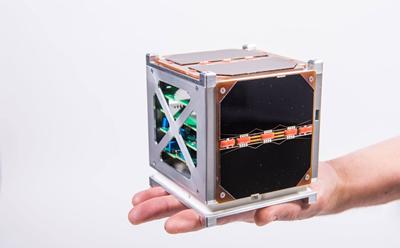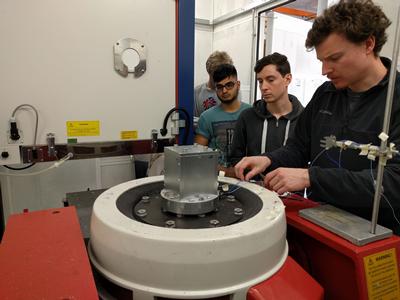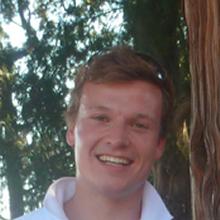Competition success puts University one step closer to satellite launch

The University of Southampton has won the backing of the European Space Agency (ESA) in its bid to put its own student-built satellite into orbit.
The University’s UoS3 satellite is one of just six projects chosen by ESA to receive expert support and access to test facilities, as part of its educational Fly Your Satellite! programme.
If the satellite passes these stages it may then be eligible for a launch, making it one of the first UK universities in space.
The miniature cube-shaped satellite, or CubeSat, measuring just 10cm wide, was the only UK university project to win ESA’s support in the competition, which saw entries from across the agency’s member states.
Southampton’s student team took part in an intensive selection workshop at the European Space Research and Technology Centre (ESTEC), in Holland, and made a presentation to an audience of satellite specialists before being selected as a finalist by ESA.
Once launched, the satellite – the result of a cross-university collaboration involving more than 60 students and staff – will orbit the Earth at a height of 400km and gather data that will be used to improve re-entry predictions for space objects.

During its year in orbit, students will monitor the satellite’s ‘health’ and receive pictures and scientific data through a ground station, currently being built on campus with the help of the University of Southampton Spaceflight Society.
The data will be used to improve space debris models, for which the University is a recognised global leader.
Senior research assistant Clemens Rumpf, who started the project with former PhD student Aleksander Lidtke, said: “It’s an amazing achievement and a great honour for the University to be one of just six projects chosen for the ESA Fly Your Satellite programme.
“We are the first university in the UK to have developed a satellite where undergraduate education has been an essential part of the project. The opportunity to work on a real space mission has been an invaluable one for our students.
“CubeSats hold a significant potential to facilitate research across the University, and we are just starting to explore the possibilities this project is opening up for us in terms of research and collaboration.”
The University’s Astronautics Research Group has been keen to put a satellite in orbit for more than ten years, with work having begun in earnest on the project in 2014.
Various departments have been involved, including Winchester School of Art, which has created artwork inspired by the project.
Spacecraft engineering student David Lawrence Ramirez, leading the current group design project, commented: “This project has been an outstanding addition to our degree, as it has allowed us to work with students and staff from across the University on a real satellite project that has now been recognised by ESA.
“Being at ESTEC was a very exciting and enriching experience, as we got to learn first-hand about the industry side of spacecraft engineering projects and network with some of the most outstanding spacecraft engineers and students from across Europe.
“We’re looking forward to the completion and launch of our CubeSat and becoming an inspiration for the next generation of spacecraft engineers at the University of Southampton.”
As well as supporting UoS3 through development, testing and possible eventual deployment, the Fly Your Satellite programme – run by ESA’s Education Office – will bring training and educational opportunities for Southampton students.
Dr Scott Walker, who provides academic support on the project, added: “The long-term aim of the project is to establish the continual development of small spacecraft at the University, enabling current and future students to learn through hands-on contact with real flight hardware. The success of this first launch opportunity is an important milestone in achieving this goal.”
Disclaimer: The view expressed herein by the authors can in no way be taken to reflect to official opinion of the European Space Agency.

